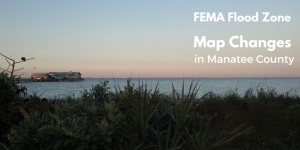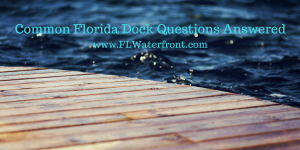
Florida Waterfront Lawyer Available for Meetings
Can I have a boat dock? Can I expand an existing dock? Can I have a swimming pool? Can I add on to an existing
residence? David Levin, environmental & waterfront property lawyer in Sarasota Florida, can cover the legal answers to these questions and more.
David Levin is available to present seminars for real estate agents at meetings, large or small, and will tailor
the presentation to the amount of available time, including a question and answer period. Have David speak at your Sarasota area meeting to educate & inform realtors or purchasers of Waterfront Property in Florida on Waterfront Law & Regulations.
This invaluable information could mean the difference between happy buyers and those who want to sue their real estate agents. Only an attorney is qualified to provide Waterfront legal advice!
All Waterfront Property owners and prospective owners should, at a minimum investigate and be aware of the answers to the following questions. To avoid frustration, delays and undue expenses, buyers of Waterfront Property should obtain the answers to these questions from a qualified source or professional prior to closing.
Contact Lori at llevin@icardmerrill.com to schedule!
FEMA
Was the existing structure built after January 1, 1975? [Note: If so, special flood plain management regulations may apply.]
Is the property located in a Federal Emergency Management Agency (“FEMA”) special hazard zone (Zone A or Zone V)?
What is the currently required Base Flood Elevation (“BFE”)?
For structures in FEMA A Zones, what is the elevation of top of the lowest enclosed, finished floor? [Note: If this elevation is lower than the BFE, the structure may be non-conforming. If non-conforming, the structure may be unlawful.]
For structures in FEMA V Zones, what is the elevation of the bottom of the lowest horizontal structural member of the lowest enclosed, finished floor? [Note: If this elevation is lower than the BFE, the structure may be non-conforming. If non-conforming, the structure may be unlawful.]
What was the Base Flood Elevation for the existing structure at the time of its construction?
Is the area below the lowest finished floor used solely for parking of vehicles, building access, or storage? [Note: If not, the structure may be non-conforming.]
Is the area below the lowest finished floor enclosed?
Is there furniture (bed, couch, tables, etc.) on the ground floor? [Note: If so, the structure may be non-conforming.]
Is there a bathroom (commode, sink, shower) on the ground floor? [Note: If so, the structure may be non-conforming.]
Is there floor covering (carpet, tile, vinyl) on the ground floor? [Note: If so, the structure may be non-conforming.]
Are the ground floor walls finished with drywall or paneling? [Note: If so, the structure may be non-conforming.]
Are there kitchen appliances (stove, fridge, oven) on the ground floor? [Note: If so, the structure may be non-conforming.]
Is there a washer and/or dryer on the ground floor? [Note: If so, the structure may be non-conforming.]
Are there separate walled rooms on the ground floor? [Note: If so, the structure may be non-conforming.]
If in a FEMA A Zone, do the walls enclosing the area below the lowest finished floor have a minimum of two openings no higher than one foot above grade having a total net open area of not less than one square inch for every square foot of enclosed area? [Note: If not, the structure may be non-conforming.]
If in a FEMA V Zone, are the walls below the lowest finished floor constructed with non-supporting breakaway walls , open wood lattice-work, or insect screening intended to collapse under wind and water loads without causing structural damage to the elevated portion of the building? [Note: If not, the structure may be non-conforming.]
Are any of the following located below the base flood elevation: Electrical Outlets, Air Conditioner, Appliances, Water Heater, Bathroom, Utility Sink?
Are other houses in the neighborhood elevated on pilings? If so, and the existing house on the subject property is built on grade, said structure may be non-conforming.
If in either a FEMA A or V Zone, does the existing building conform to current FEMA regulations?
If the existing structure does not conform to current FEMA regulations, when was the structure last improved?
What was the market value of the non-conforming structure when improved?
What was the cost of the improvements when made? [Note: If the cost of the improvements exceeds 50% of the market value of the structure when improved, the structure may be non-conforming or future improvements may be limited.
If the structure does not conform to FEMA regulations, has a variance been granted by the appropriate local government?
Is any portion of the property or structure located seaward of the State of Florida Coastal Construction Control Line?
Were any structures located seaward of the State Coastal Construction Control Line (“CCCL”) constructed or modified after the establishment of the CCCL?
If so, was such construction or modification either permitted by the Florida Department of Natural Resources or Florida Department of Environmental Protection, or otherwise exempt from permitting requirements? [Note: If not, such construction or modification may be unlawful.]
If permitted, was such construction or modification performed in accordance with all permit conditions?
Is any portion of the property or structure located seaward of any local government coastal setback line?
If so, were existing structures permitted or otherwise authorized by the applicable local government? [Note: If not authorized, such structures may be non-conforming, or unlawful.]
Adjacent Waters
Are the waters adjacent to the property designated as either Outstanding Florida Waters or an Aquatic Preserve? [Note: If yes, additional regulations apply to construction within such waters.]
Are the bottoms of the adjacent waters sovereign submerged lands (i.e., State owned), or are they privately owned?
If the bottoms of the adjacent waters are privately owned, have any easements been granted for the use thereof?
Are there any mangroves on or adjacent to the property?
Do the mangroves extend waterward of the mean high water line?
How far waterward do the mangroves extend from the shoreline? [Note: The extent of trimming that can be conducted on mangroves located on sovereignty (state-owned) submerged lands is substantially limited.]
How tall are the mangroves? [Note: Generally, mangroves less than 6 feet in height may not be trimmed. Special regulations apply to mangroves that are 10, 16 and 24 feet or less in pretrimmed height.]
Have the mangroves been historically trimmed to maintain a distinct configuration, such as a hedge or view window? [Note: If so, trimming may be exempt from state permitting requirements.]
Have the mangroves been previously trimmed in accordance with all applicable State regulations? [Note: If not, exemptions may not apply.]
Are the mangroves protected as being part of a mitigation area or an area included within a conservation easement?
Other than mangroves, are there any wetlands on the property?
Has there been any alteration of the wetlands by either dredging or filling?
Was a federal, state, or local government permit required for the observed alteration of the wetlands?
Were all required governmental authorizations obtained prior to the alteration of the wetlands? [Note: If not, the observed alterations may be unlawful.]
May future dredging or filling be conducted within the observed wetlands?
Dredge and Fill Activities
Are there any structures, such as a seawall, dock, deck, or pier constructed in, on, or over adjoining waters and/or wetlands?
Was a federal, state, or local government permit required for the construction of such structures?
Was a required federal, state, or local government permit obtained prior to the construction of the observed structures? [Note: If not, such structures may be unlawful and considered a public nuisance, subject to removal.]
Was the structure constructed in accordance with all approved plans?
Has the structure been altered since it was originally constructed?
Were all alterations permitted by all applicable regulatory agencies?
Will a federal, state, or local government permit be required for the maintenance, repair or replacement of existing structures?
Are new structures proposed for the subject property?
Will the new structures be permittable under all applicable federal, state, and local regulations?
If a new dock or dock expansion is proposed, are their adequate water depths to facilitate mooring at and access to the dock?
Are there any seagrasses in the vicinity of the proposed dock or dock expansion?
Who owns the submerged bottoms upon which the new dock is to be built?
If privately owned, is there an easement granting the upland owner the right to build and maintain a dock upon said privately owned submerged bottoms?
Are there any private deed restrictions pertaining to the construction of docks within waterways?
Are there any private agreements, such as a “Joint Use Agreement” affecting the rights to use any existing structures?
Are there any agreements or easements granting public rights of lateral access across the subject property?
Are there any structures located below the mean high water line or otherwise located on state lands?
If located on state lands, were such structures authorized by the State? [Note: If not, such structures may be unlawful and considered a public nuisance, subject to removal.]
Is there a dredged navigation channel adjacent to the property?
If so, was the dredged navigation channel permitted by federal, state and local authorities? [Note: If not, continued navigable access cannot be assured in the future.]
Miscellaneous
Does the deed specify ownership to the mean high water line, or other statement indicating an intention that ownership is “to the waters”?
Does the deed otherwise reflect that the property is benefited by riparian rights?
Are there any existing or proposed structures on neighboring properties that may adversely affect the use and enjoyment of the subject property?
Was the property or any structures upon the property the subject of any federal, state, or local government enforcement action?
Are there any restrictions on the use of the property mandated as a consequence of any enforcement actions?
Is the property burdened by a recorded Conservation Easement?
Is there a functioning potable (drinking) water well on the property?
Will a new septic tank be required to facilitate use of the subject property?
Will the new septic tank drainfield be at least 75 feet from any private potable water well?
Will the new septic tank drainfield be at least 75 feet from any surface water body?
Is there presently, or has there ever been a fuel oil storage tank on the property?
David can help answer all these questions and more. Book him for your meeting today to help your audience learn more about Florida Waterfront Law! Contact Lori at llevin@icardmerrill.com to schedule.
David M. Levin is a Shareholder of the Icard/Merrill law firm. His practice is concentrated in the area of environmental and waterfront property law.
Learn more about David Levin & Florida Waterfront Property Law on David’s website, Facebook Twitter & LinkedIn pages.





